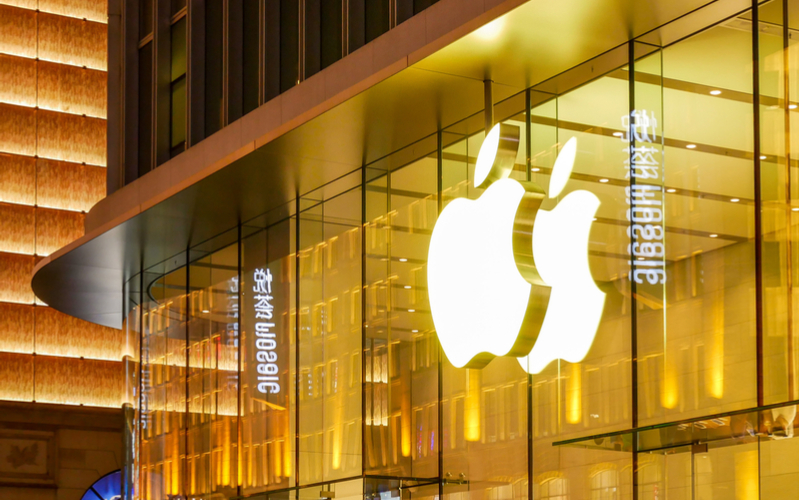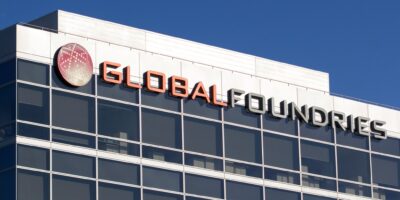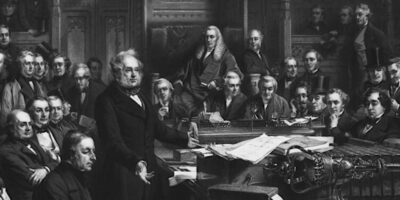Apple’s Woes Show that the Trade War Has Failed Miserably
Last year’s trade belligerence began with confidence: “trade wars are good, and easy to win,” promised the president of the United States. There will be no trade retaliation, his advisers said. Apple would be exempted from tariffs and thus protected against any downside, they said.
It hasn’t worked out that way.
The supply chain interruptions, the confusions and uncertainties of the producer and investor class, the increase in prices, the new taxes in the form of tariffs that swamp the tax reductions of 2017, the rise of nationalism in China (the State Department has even issued a travel advisory), the collapse of exports, the rising trade deficit – every bit of it was predicted in AIER’s pages, and not only by us but also by economists all over the world, and even many leaders in the Republican Party.
It was all avoidable. Every bit of it.
Financial markets have spent a year worrying and sagging, just waiting for some decisive news from a high flyer. Would there be a glorious trade deal that would result in freer trade? That hope was always a pipe dream. What people have been unwilling to admit is that the man in charge wants tariffs. He believes in them. He thinks they are productive and wonderful. He flagrantly ignores a half millennium of scholarship and experience that shows the opposite.
There was never a chance that this could turn out well.
The bad news that the trade war would have terrible consequences in the real world came the first week of January 2019: Apple’s sales in China have collapsed. Their prices have become uncompetitive. The company lacks the flexibility to respond to growing competition in that country. And why? Just because Apple is exempt doesn’t mean its suppliers are. And Chinese consumers have themselves turned against this American company, imposing their own voluntary sanctions.
Tim Cook of Apple made the case very clear: “We believe the economic environment in China has been further impacted by rising trade tensions with the United States. As the climate of mounting uncertainty weighed on financial markets, the effects appeared to reach consumers as well.”
As the Wall Street Journal editorializes (perfectly):
When CEOs don’t know when government might harass them next, they postpone or cancel investment and hiring decisions. That explained much of the capital strike and slow growth in the Obama era.
Trade uncertainty has a similar secondary economic impact beyond the immediate higher costs of tariffs. If CEOs aren’t sure of their supply chains, or whether tariffs will raise their costs and limit their markets, they also postpone or reduce capital spending. This explains a large part of the investment slowdown in the last half of 2018.
China’s growth rate was slowing before Donald Trump was elected, but trade tensions with the U.S. have further depressed business investment and put a dent in worker incomes, which has reduced consumer spending….
U.S. businesses across sundry industries have been complaining about the costs and supply-chain complications of the Trump tariffs. In its third-quarter earnings report, Tesla flogged “increased import duties on components sourced from China” that are used to make its Model S and Model X in Fremont, California.
As Chinese consumers tighten their belts, iPhones have been losing market share to less expensive domestic rivals like Huawei and Vivo. Overall Chinese smartphone sales have also been falling, which has knock-on effects on U.S. businesses and workers. China is the second-biggest buyer of U.S. semiconductor exports, and its telecom firms rely on components from U.S. businesses including Qualcomm, Broadcom, Intel and Micron Technology.
American car makers have also reported falling sales in China. General Motors sales fell nearly 15% during the third quarter while Ford’s dropped 43% from the prior September. Lower foreign profits could reduce U.S. investment and returns for American shareholders and workers. Weakening growth in China has also put downward pressure on oil prices, which could prompt U.S. shale producers to reduce drilling.
The point is that President Trump can’t shield U.S. businesses from the collateral damage of his trade brawl with China even if he tried. The two countries’ economies are entwined for better or worse, which is why there’s a political and economic incentive for both sides to cut a trade deal that protects intellectual property, lowers tariffs, and above all reduces uncertainty.
Notice again this claim and take it seriously: “This explains a large part of the investment slowdown in the last half of 2018.”
Defenders might have to repeat this like a mantra in the coming year. More than that, we are going to need some serious and robust empirical studies to demonstrate the linkage between 2018’s trade wars and the softened economic conditions around the world.
AIER has embarked on just such a study, with its house scholars and visiting fellows. It’s going to take the better part of 5 weeks to complete but the work is absolutely necessary.
Why?
There will be plenty of people out there who are going to blame the economic slowdown on deregulation, tax cuts, and Republican control generally. They will advocate a jobs guarantee and tax increases instead. This is a sure prescription for making a bad situation worse.
It’s happened before. After the 1929 crash, the economy might have quickly recovered but for the interventions of the Hoover administration that culminated in the disastrous Smoot-Hawley tariff of 1930 that tanked what was left of investment and plunged the US into the Great Depression from which it didn’t recover until after World War II.
The way to prevent a repeat of this history is by engaging the battle of ideas. The blame needs to attach itself where it belongs.
So the stakes are high.
Tragically, too few Republicans and market defenders have called out the Trump administration for its trade policies. They decided to downplay the potential dangers because they like the deregulation, the judicial appointments, and the general war on the left. This has allowed the administration to pursue its dangerous policies, and unrelenting errors on the trade deficit, with impunity.
A bit too late, the financial press is starting to name the problem. The Investors Business Daily nails it:
And, of course, there’s President Trump. We’ve been champions of his low-tax, deregulatory agenda. And we still are. But we’re more than a bit worried that the trade war with China may be doing harm to our economy….
So Trump’s tariffs, and the threat of more, have hurt China’s economy badly.
But it’s also hurting U.S. companies. Those that import parts and finished goods from China are watching their costs soar and, in some cases, laying off workers. Meanwhile, U.S. companies now operating in China are watching their orders shrink, due to tariffs.
In October alone, U.S. companies paid $6.2 billion in tariffs. That’s up from $4.4 billion in September, and $3.1 billion from a year earlier. And, of course, consumers and workers ultimately pay the tax through lower pay and higher prices. And now, the ISM Index, a key indicator of industrial strength, has posted its biggest drop since the financial crisis.
The terrible reality is that the trade policies of the last year have seriously compromised what might otherwise have been a solid pro-growth agenda. There can be silence no more. There’s too much at stake. Free trade and free markets are part of the same agenda. Both are essential to building a humane economy that works for everyone.












